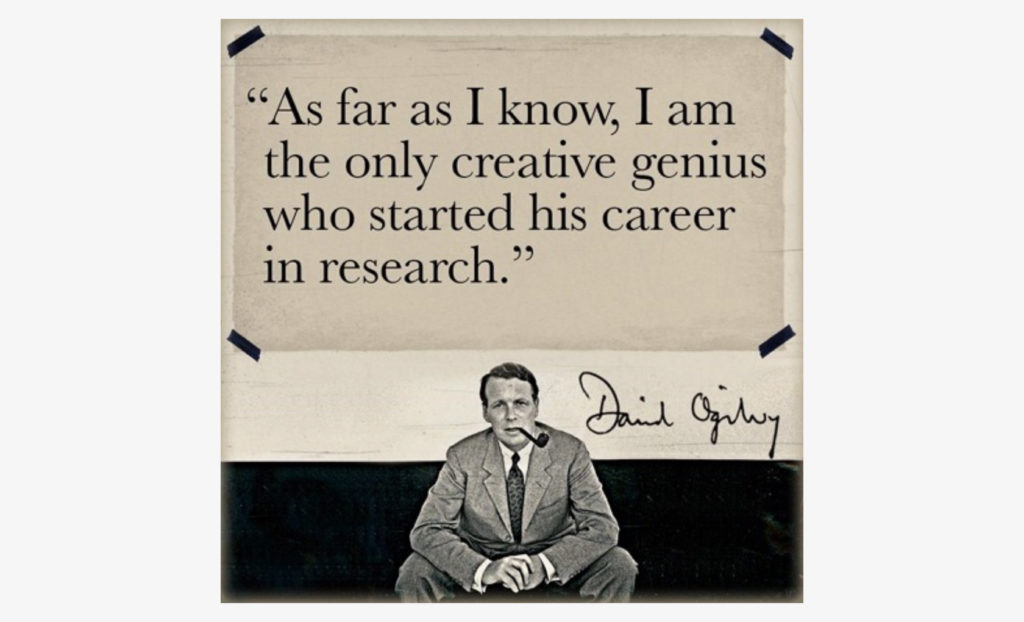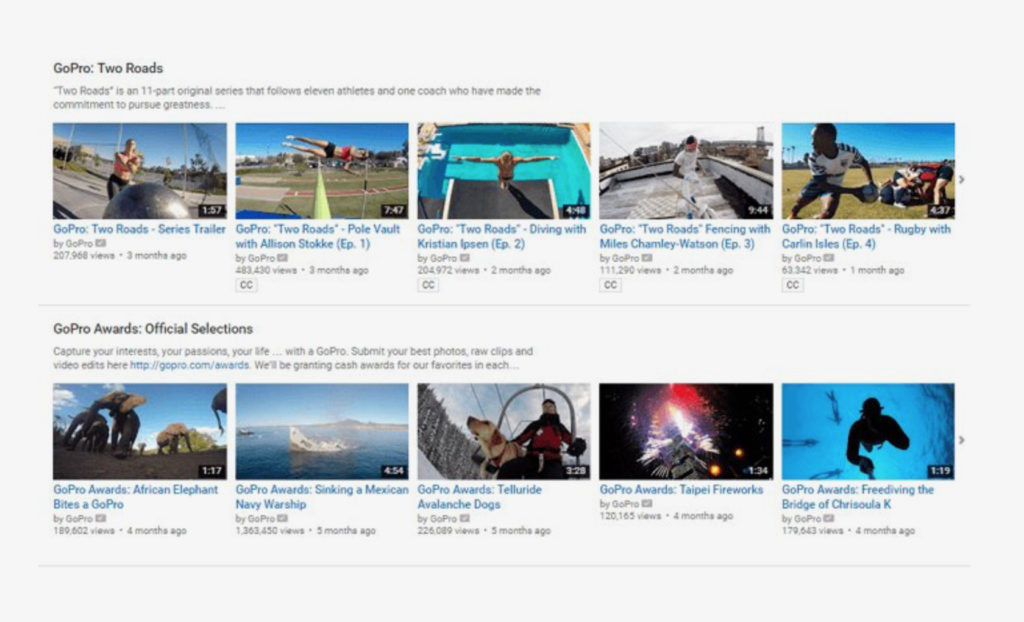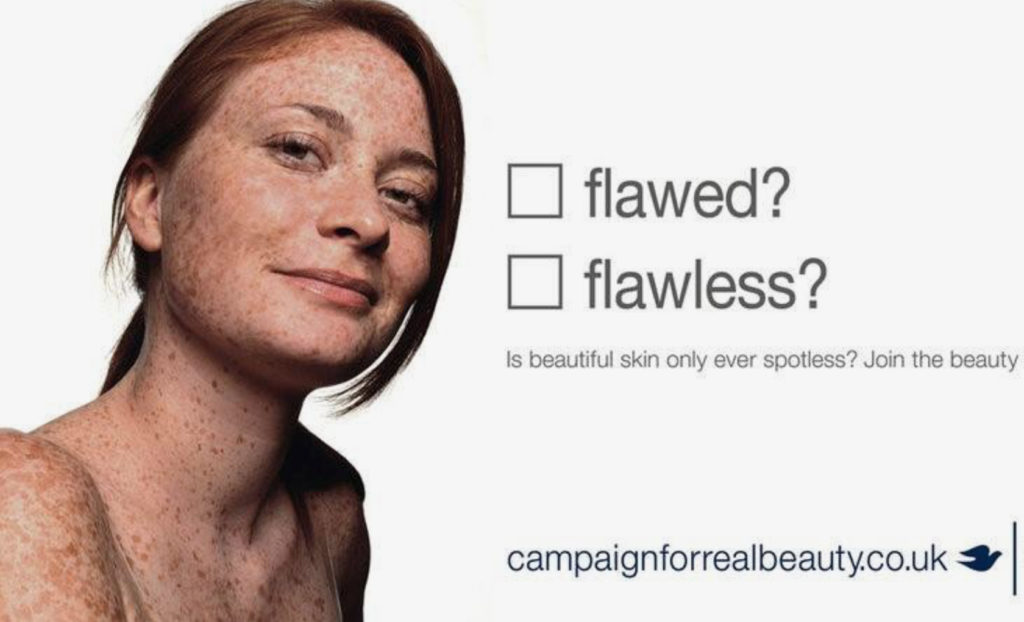Applying the big idea concept to data-driven storytelling

Sure, data-driven storytelling is the next big thing in content marketing. But how do you create that narrative?
Recently, Moz has established that data is meaningless without a story, MarketingLand has published an article detailing what a data-driven story should contain in order to go viral, and Google is preaching the power of telling meaningful stories with data.
It is now generally knowledge in the industry that there needs to be a story driving all marketing initiatives for them to be successful and to successfully engage the target audience – the Internet is abundant with very useful tips on what types of stories you should focus on. But how do you start creating that story?
Start With A Big Idea
All stories start with one idea – make it a Big Idea. The concept of The Big Idea was coined by David Ogilvy, advertising extraordinaire from the Mad Men era. The “Father of advertising” actually started his career in the Audience Research Institute in New Jersey, which tells you all you need to know about the importance of data.

The Big Idea is defined as “The driving, unifying force behind a brand’s marketing efforts.” Does that sound like something you already do? The definition doesn’t actually end there. A Big Idea, to be qualified as such, needs to tick ALL of the following boxes, according to The Entrepreneur:
- Transformative: the idea can change attitudes, behaviours, perspectives.
- Ownable: the idea needs to be synonymous with your brand, and no one else.
- Simple: If you can summarise your big idea in one sentence, forget it. Intuitiveness and clarity are what makes consumers think “I get it!”.
- Original: If it’s been done before, it can’t be a big idea. Focus on originality, on something the audience has never seen before.
- Surprising: A surprise is something unexpected, that makes consumers feel special. Not something completely nonsensical that makes everyone feel strange.
- Magnetic: the idea needs to be something that people would naturally gravitate towards, or stumble upon.
- Infectious: the idea has to stick to the consciousness, and never leave. Like a Taylor Swift song.
- Contagious: this is where the “viral” aspect comes in. It has to be something worth talking about – something that YOU would talk about.
- Egocentric: if there’s anything people are always interested in, it’s themselves. If you can appeal to that egocentricity, you’re on to something.
- Likeable: it goes without saying that the idea should inspire positive emotions, ultimately.
A Big Idea isn’t simply a strategy. A Big Idea is a unique strategy that will set your business apart from competitors.
The fact that the idea needs to have all of the qualities above is probably why many businesses don’t have a Big Idea. Marketers can be left scratching their heads for weeks, months coming up with A Big Idea – and there are deadlines to hit.
By applying this advertising concept to your marketing efforts, you’ll find that it will make a world of difference and help you get into the right mindset to create engaging content.
How To Find A Big Idea?

It’s a common misconception that these ideas just magically pop into a creative’s head, at 2am. But it’s also a common misconception that it is nigh impossible to come up with a Big Idea. These 3 steps are a good place to start:
Step 1: To guide your quest for data, ask yourself: why are you doing this? What is the initial problem? Without a problem, there can be no solution.
Step 2: Do a PEST analysis and find out the environments the business exists in. This is where the “data” aspect of “data-driven storytelling” comes in. The more data and background information you have about the business, the better:
Political – it’s not just about policies and legislation. The political environment of a business can also be how it interacts with its competitors. Do your competitors have much more marketing budget? Are they also launching a new line of products? Run a competitor analysis, and look at the content they have on their website, the campaigns they run, their rankings, their social engagements.
Economic – Are your shoes perhaps too cheap for your audience, who associate price with quality? Dig deep into your Analytics data to see what products are most successful with your current target audience, and what price range is the most popular.
Socio-cultural – Where does your target audience spend their time when online? What are they interested in? You can find some of this data in Google Analytics, but it’s also useful having a look at your social analytics to find out what types of things people share and talk about, to get a good idea of their socio-cultural behaviour. Tools like True Social Metrics, Sprout Social and, Buzzsumo can help you uncover those insights.
Technological – What technologic advances will affect your efforts positively or negatively? Will only targeting mobile be a benefit or a hinderance for your business? Look at your analytics, and determine which devices your audience uses the most – which social platforms they favour – which OS they use, and so on.
Once you’ve gathered all that data, it’s time to put it into application.
Step 3: Find a Big Idea. Easier said than done, of course. Using the data you’ve now gathered and the checklist above, you now need to determine a single-minded proposition, on your own or with the help of your team. Remember, it needs to be absolutely streamlined for it to work. A Big Idea also needs to be just that: a broad, original idea to guide your initiatives, not a tactic, or a content idea. Let’s take GoPro, as an example. “Letting people upload their own GoPro videos” isn’t a Big Idea. But “Capture Life’s Most Exciting Moments” is.

Example: Dove
If you’d like another example of Big Ideas to inspire your data-driven storytelling efforts, have a look at Dove’s “Campaign For Real Beauty” by Ogilvy and Mather. This is an almost textbook-perfect example of how a company was faced with a problem (the threat of being outperformed by other soap brands), and found a solution through a Big Idea. It tackled an issue that was already on many women’s minds, the issue of body confidence and positivity – and put itself at the head of a conversation that is still going on today.

Own your marketing data & simplify your tech stack.
Have you read?
Chrome’s announcement on dropping cookie opt-in last month closed the door on a 5 year saga for marketers. But what is the landscape like in 2025 for cookie-based measurement?
Generative AI is transforming the way that marketers plan and assemble content for their Paid Ads. As big platforms like Google, Meta and TikTok increasingly build the tools needed to...
In a surprising move that has sparked heated debate, Mark Zuckerberg announced on his Instagram that Meta will be reducing its levels of censorship and in particular fact-checking on its...


